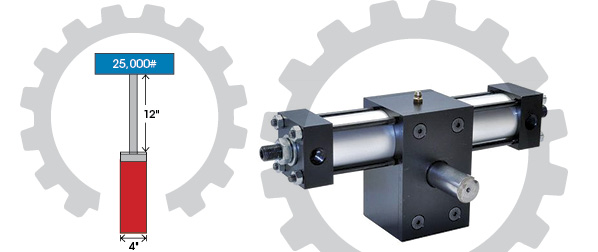Something Is Missing: Using Alternative Energy

There is something missing in my repertoire of fluid power components. Can you help me?
In the Off-Highway 2010 edition of the Fluid Power Journal, Brian Hageman had an article on a new hydraulic pump. How many of you read it? Keep your hands up. Oh, you intended to read it but never got around to it. I see. Ok, you can put your hands down now. We are going to discuss some of the implications of what was presented in the article, so those of you who read it can stay with me. The rest of you need to go back and read the article. When you have finished, you can come back here and catch up.
Brian opens the door to the discussion of using fluid power as an efficient and environmentally friendly way to capture and transfer energy. Now, in his article, he is promoting a device where heat energy derived from waste, solar, geothermal, and even internal combustion is converted directly into hydraulic energy, but the fact is that alternative energy from heat, wind, or ocean waves would be more efficiently captured if the energy was converted directly and used as fluid power. The problem as I see it is two-fold: there is the assumption that alternative energy needs to be converted to electricity in order to be used, and we do not promote an economical way of directly using stored energy.
I am not saying that all electrical systems could be replaced with fluid power. We would be hard pressed to provide lighting, toasters, computers, and microwave ovens driven by fluid power, but for many industries, the major energy requirements are for rotary and linear motion. This is where we should really shine. The fact is that we could replace almost every electric motor in a facility with a hydraulic motor and operate more efficiently. If the hydraulic energy was produced by an alternative energy device, then this is doubly true.
How many of you believe that? No, really… give me a show of hands. How many of you actually believe that? I see some enthusiastic hand waving, some tentative half-mast waves, a bunch of blank stares, and a group of petulant grumps who are thinking, “That will never happen.” This is important. If we are not convinced, we will never be able to encourage others to move outside their comfort zones and try something new. But being convinced is not enough. We have to be right, and we have to have the knowledge and the components to follow through.
There is no question that we have the ability to capture and store energy using fluid power. Where we are weak is in the area of using the energy efficiently. Pneumatic folks have an advantage here because they are used to storing energy at a higher than required pressure and then using a regulator for a controlled release. But hydraulic aficionados typically store the energy at high pressure and then use flow controls or pressure-reducing valves for the controlled release. This can be a huge waste of energy that is directly proportional to the ratio of the pressure stored and the pressure required where the work is being done. (See the article on “Reducing Pressure: A Way to Save or Waste Energy,” Jan/Feb 2010 issue).
If we are to successfully replace electric motors with hydraulic motors, we need to understand how an electric motor uses energy and then mirror that process and even improve on it. Let’s take a look at a typical AC motor application with a varying load and, without getting too technical, talk about what goes on electrically.
The speed of the electric motor is established by the windings and the frequency. The torque available is a factor of the voltage and the current through the motor. It is important to remember that there is never a time when there is no load on a rotating motor. Energy is required for the developing and collapsing magnetic fields as well as for overcoming the resistance to motion from the rotating components. You may have heard the expression “no load amps,” which is a bit of an oxymoron. It describes the power consumption of an electric motor when there is no external resistance on the shaft. The “no load” power consumption is typically one third of the fully loaded condition.
On start up, there is a large inrush of current as the windings develop the magnetic fields and the motor mass accelerates to its rated speed. A few milliseconds later, when the motor is at rated speed, the current settles down to what is needed to maintain that speed against the resistive load. As the load varies, the voltage is constant and the speed stays the same. It is the current that changes to match the load. There is no metering for a standard electric motor. The speed and voltage are continuous. Only the current changes to match the load.
So the question is, how can we mirror that process and do it even better?
We will begin by using a variable displacement hydraulic motor. For the sake of the illustration, let’s assume a power source that will be capable of sufficient flow and with a fixed pressure that will provide enough torque to meet the speed and load requirements with the motor at maximum displacement. To control the displacement of the motor, we will provide a tachometer that senses the rpm of the motor shaft. The displacement is spring biased to maximum. We now have a system that can mirror the characteristics of a standard electric motor.
As in the electric motor, there is never an actual “no load” condition. Pressure and flow are always required to rotate the motor. With a variable displacement motor, the minimum displacement can be near zero and so the available torque would also be near zero no matter what the available pressure may be. (Torque = pressure x displacement / 2π.) For any given motor speed, available pressure, and external resistive load, there will be a discreet displacement to match that speed.
On start up, there is an inrush of flow (current) at a fixed pressure (voltage) as the motor mass at full displacement accelerates to its rated speed. A few milliseconds later, the tachometer commands the displacement to diminish until it reaches the discreet location for the speed and resistive load. As the load varies, the displacement and flow (current) will change to match the new requirement but all the while remaining at the same speed. All this is without the accompanying pressure drop across a flow control or pressure-reducing valve.
So, we can match the functionality of the electric motor, but can we do better? Absolutely!
This is what we can do: We can provide a soft start with no additional controls. We can provide variable speed without having to add an expensive variable frequency drive. We can provide rapid reversing. We can do many starts and stops per hour without special equipment. We can provide high speed/low torque or low speed/high torque without the expense of gear boxes. We can fit our motors into more compact spaces because of a higher power density. We can place our motors under water and/or in locations where there would be the danger of explosion if there were a spark.
In our illustration, we used a fixed pressure, but in reality we could use a variable pressure and achieve the same results. This throws open the door to efficiently using accumulators to store alternative energy converted to fluid power.
So, what’s missing? Controlling displacement is relatively easy using electronics, but I think if we are going to be successful in replacing electric motors, we will need to have a simpler and less expensive way of doing it. I am not aware of any hydraulic motors in production where there is a non-electronic sensor to control displacement based on rpm. If you know of such a device, please contact me and let me know.



